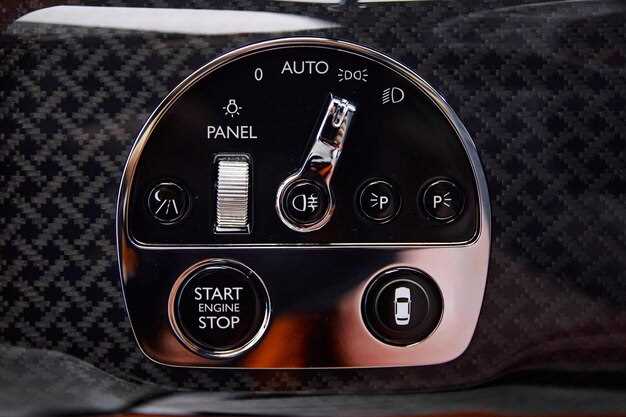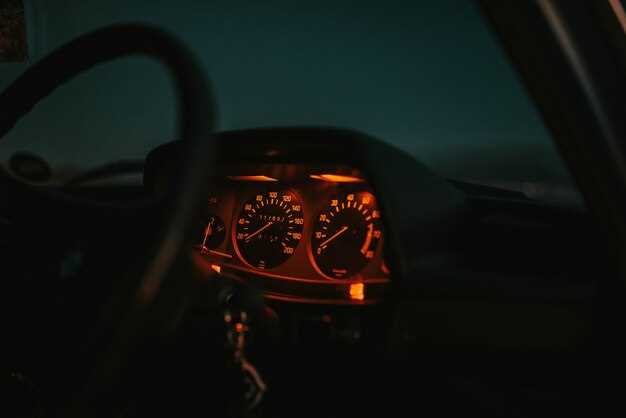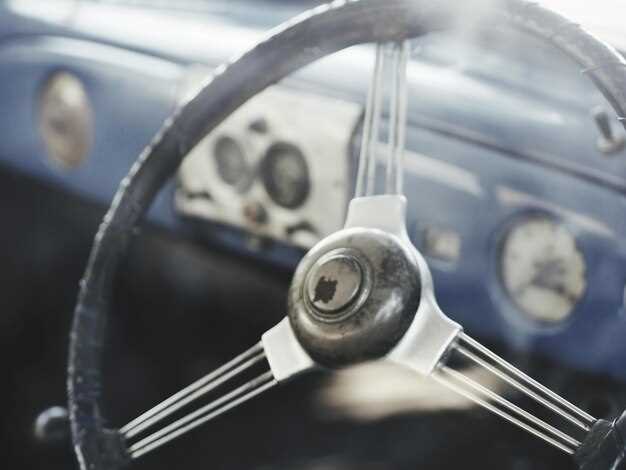Upgrading the Dashboard on a Classic Fiat

For classic Fiat enthusiasts, the dashboard is more than just a collection of gauges and switches; it represents the heart of their vehicle’s character. Upgrading this vital component can enhance both functionality and aesthetic appeal, merging modern technology with vintage charm. As enthusiasts seek to revitalize their beloved Fiats, understanding the key elements of dashboard upgrades becomes essential.
The dashboard serves as the central command center for drivers, facilitating communication between the vehicle and its operator. In many classic Fiat models, original dashboards may lack the modern features that today’s drivers have come to expect. Upgrading can involve replacing dated instruments with more accurate and visually appealing gauges, integrating digital displays, or even adding connectivity features such as Bluetooth and GPS navigation.
Beyond technological enhancements, the process of upgrading the dashboard can also include customization options that resonate with the personal style of the enthusiast. Whether it’s choosing unique materials, colors, or designs that reflect the owner’s personality, transforming the dashboard should be an opportunity to celebrate the individual story of each Fiat. This article will explore various aspects of dashboard upgrades, helping enthusiasts make informed choices that elevate their driving experience without compromising the classic essence of their vehicles.
Choosing the Right Materials for Dashboard Restoration

Restoring a classic Fiat dashboard involves selecting materials that not only enhance aesthetics but also ensure durability and functionality. The right materials can significantly impact the overall look and feel of the vehicle’s interior.
Vinyl is a popular choice for dashboard restoration due to its versatility and ease of application. It can mimic the original finishes while providing a robust surface that withstands heat and moisture. Many enthusiasts opt for high-quality vinyl that closely matches the factory color and texture, ensuring an authentic appearance.
Faux Leather is another option that adds a touch of luxury to the dashboard. This material is durable and easy to clean, making it an attractive alternative for those looking to elevate the interior experience. It provides a soft touch while maintaining resilience against wear and tear.
Wood Veneer can be used to create a classic and sophisticated look for dashboard accents. When selecting wood, consider options like walnut or mahogany that reflect the vintage style of classic Fiats. Ensure that the veneer is treated properly to resist moisture and fading over time.
Paint is essential for restoring color to faded dashboards. Using high-quality automotive paint specifically designed for interior surfaces ensures longevity and adherence. Select colors that are factory-accurate to maintain the originality of the vehicle.
Additionally, consider the use of adhesives that are suitable for automotive applications. The right adhesive ensures that vinyl, leather, or wood securely adhere to the dashboard, preventing lifting or peeling in the future.
In summary, choosing the right materials for dashboard restoration involves balancing authenticity, aesthetics, and durability. By selecting quality vinyl, faux leather, wood veneer, automotive paint, and appropriate adhesives, Fiat enthusiasts can successfully restore their dashboards to their former glory while enhancing the overall driving experience.
Step-by-Step Guide to Installing Custom Dashboard Gauges
The restoration of a classic Fiat can truly transform its interior, especially when it comes to upgrading the dashboard. One of the most impactful changes is the installation of custom dashboard gauges. This guide will walk you through the installation process step-by-step.
Step 1: Gather Your Tools and Materials
Before beginning, ensure you have all necessary tools and materials. You will need a set of screwdrivers, a dash removal tool, wiring connectors, and your custom gauges. Additionally, keep a multimeter handy to check electrical connections.
Step 2: Remove the Existing Dashboard
Start by disconnecting the battery to avoid electrical shocks. Carefully use your dash removal tool to detach the dashboard from the car frame. Take your time to avoid breaking any clips or screws; document the removal process if needed for reassembly.
Step 3: Disconnect Old Gauges
Once the dashboard is removed, locate the existing gauges. Disconnect the wiring harnesses connected to each gauge, noting where each wire is attached. You may find it helpful to take photos for reference during installation.
Step 4: Prepare for New Gauge Installation
Before installing the custom gauges, ensure they are compatible with your Fiat’s system. Read the manufacturer’s instructions carefully to understand the specific wiring requirements and gauge positions.
Step 5: Connect New Gauges
Begin connecting the custom gauges using the wiring connectors. Match each wire according to the notes or photos taken earlier. Use a multimeter to verify the connections to prevent any potential electrical issues.
Step 6: Test the Gauges
With everything connected, reconnect the battery and turn on the ignition to test the new gauges. Ensure each gauge responds correctly and displays accurate information. Troubleshoot any issues at this stage, as it will be more challenging once the dashboard is reinstalled.
Step 7: Reinstall the Dashboard
Once satisfied with the gauge functionality, carefully reinstall the dashboard. Make sure all screws and clips are securely fastened. Pay attention to alignment to avoid any future problems with fitting.
Step 8: Final Touches and Clean-Up
Double-check all connections and fittings before putting away your tools. Clean up the workspace, ensuring no debris is left inside the vehicle. Take a moment to appreciate your newly upgraded dashboard, reflecting the dedication to restoring your classic Fiat.
Enhancing Aesthetic Appeal with Vintage-inspired Finishes

Restoration of classic Fiat dashboards requires attention to detail to ensure that the end result reflects the timeless elegance of vintage design. One significant aspect of this process is selecting the right finishes that enhance the overall aesthetic appeal.
To achieve a vintage-inspired look, consider the following finishes:
- Wood Veneer Accents: Utilizing high-quality wood veneers can replicate the classic charm of Fiat dashboards. Choose species that were popular in the era of the car’s original production, such as walnut or mahogany.
- Leather Wrapping: Incorporating leather for padding and covering can bring a touch of sophistication. Opt for colors and textures that mirror the original offerings, ensuring authenticity in restoration.
- Metal Trim: Authentic metal finishes, such as brushed aluminum or polished chrome, can be utilized to accentuate various dashboard elements. Look for original parts or high-quality reproductions to maintain authenticity.
- Retro Color Palettes: When painting or refinishing dashboard components, choose colors that were popular in the vintage era. Soft pastels or bold shades, depending on the model, can help enhance the nostalgic feel.
Each of these finishes contributes to the overall aesthetic and can greatly enhance the desirability of the restored dashboard. Attention to detail in the selection of materials and finishes can transform a standard restoration project into a stunning homage to classic Fiat design.
Incorporating vintage-inspired finishes requires careful planning and execution. Here are some steps to follow:
- Research the original finishes used in your particular Fiat model.
- Select materials that closely match those found in vintage dashboards.
- Prepare the surfaces properly to ensure adhesion of new finishes.
- Apply finishes in a controlled environment to achieve a high-quality look.
- Inspect and refine the details to ensure a polished final result.
By enhancing the aesthetic appeal of the dashboard with vintage-inspired finishes, restorers can ensure that classic Fiat enthusiasts not only appreciate the functionality but also the beauty and historical significance of their vehicles.



